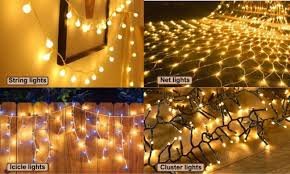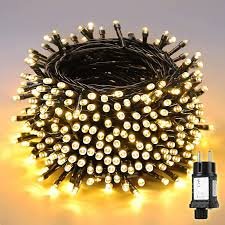Fairy lights have long been cherished for their ability to transform ordinary spaces into magical realms. Whether adorning a Christmas tree, illuminating a garden path, or creating a cozy ambiance in a bedroom, fairy lights offer versatile and enchanting lighting solutions. This comprehensive guide explores the history, types, uses, and safety considerations of fairy lights, providing you with all the information needed to incorporate them into your home decor.
Table of Contents
The History of Fairy Lights
The origins of fairy lights can be traced back to the 19th century. Initially, these small glass candle lamps were designed to provide safer illumination compared to open flames. Samuel Clarke, an English designer, patented a glass cup covered with a dome in 1885, which became known as the “fairy lamp.” These lamps were popular in nurseries, sickrooms, and hallways due to their soft glow and reduced fire risk citeturn0search17.
As technology advanced, the electric fairy lights we know today emerged. They gained widespread popularity in the early 20th century, especially during Christmas celebrations. The tradition of decorating Christmas trees with lights began in Germany and spread across Europe and North America. Over time, fairy lights evolved into a year-round decorative element, used in various settings beyond the holiday season citeturn0search18.
Types of Fairy Lights

Fairy lights come in various forms, each suited to different decorative needs:
- String Lights: The most common type, consisting of a series of small bulbs connected by a wire. They are available in various lengths and colors, making them versatile for indoor and outdoor use.
- Fairy Light Curtains: These are strings of lights arranged vertically to create a curtain effect. They are often used as backdrops for events or to add a whimsical touch to a room.
- Battery-Operated Lights: Ideal for areas without easy access to electrical outlets, these lights are powered by batteries, offering flexibility in placement.
- Solar Fairy Lights: These eco-friendly lights harness solar energy during the day to power LED bulbs at night, making them perfect for outdoor use.
- Fairy Light Jars and Bottles: By placing a string of fairy lights inside a jar or bottle, you can create a charming lantern effect. This DIY project adds a rustic or vintage touch to your decor.
Creative Uses of Fairy Lights
The versatility of fairy lights allows them to be used in numerous creative ways:
1. Bedroom Ambiance
Drape fairy lights around the bed frame or hang them from the ceiling to create a dreamy, starlit effect. This soft illumination is perfect for relaxation and adds a cozy atmosphere to the room.
2. Outdoor Gardens and Patios
Use fairy lights to illuminate garden paths, wrap them around trees, or hang them from pergolas to enhance your outdoor spaces. Solar-powered fairy lights are particularly suitable for this purpose, as they charge during the day and illuminate at night.
3. Event Decorations
Whether it’s a wedding, birthday party, or festive gathering, fairy lights can transform any event. Hang them from the ceiling, wrap them around pillars, or use them as centerpieces to add a magical glow to the occasion.
4. Wall Art and Photo Displays
Create a gallery wall by framing your favorite photos with strings of fairy lights. Alternatively, use the lights to outline shapes, words, or symbols on your wall, adding a personalized touch to your decor.
5. DIY Projects
Engage in creative DIY projects by incorporating fairy lights. For instance, fill mason jars with lights to create lanterns, or use old wine bottles as light holders. These projects not only recycle materials but also add unique elements to your home decor.
Safety Tips for Using Fairy Lights

While fairy lights are generally safe, it’s essential to follow safety guidelines to prevent accidents:
- Check for Certifications: Ensure that the fairy lights you purchase are certified by recognized safety standards.
- Avoid Overloading Circuits: Do not connect too many strings of lights together, as this can overload the electrical circuit and pose a fire risk.
- Turn Off When Not in Use: Always turn off fairy lights when leaving a room or going to bed to reduce the risk of overheating.
- Inspect Regularly: Periodically check the lights for any signs of damage, such as frayed wires or broken bulbs, and replace them promptly.
- Keep Away from Flammable Materials: Do not place fairy lights near curtains, bedding, or other flammable materials.
Also read Affordable Dentures A Comprehensive Guide to Cost-Effective Tooth Replacement
Conclusion
Fairy lights are more than just decorative elements; they are tools that can transform any space into a magical environment. From their rich history to their diverse applications, fairy lights offer endless possibilities for enhancing your home decor. By choosing the right type and using them creatively and safely, you can enjoy the enchanting glow of fairy lights throughout the year.


